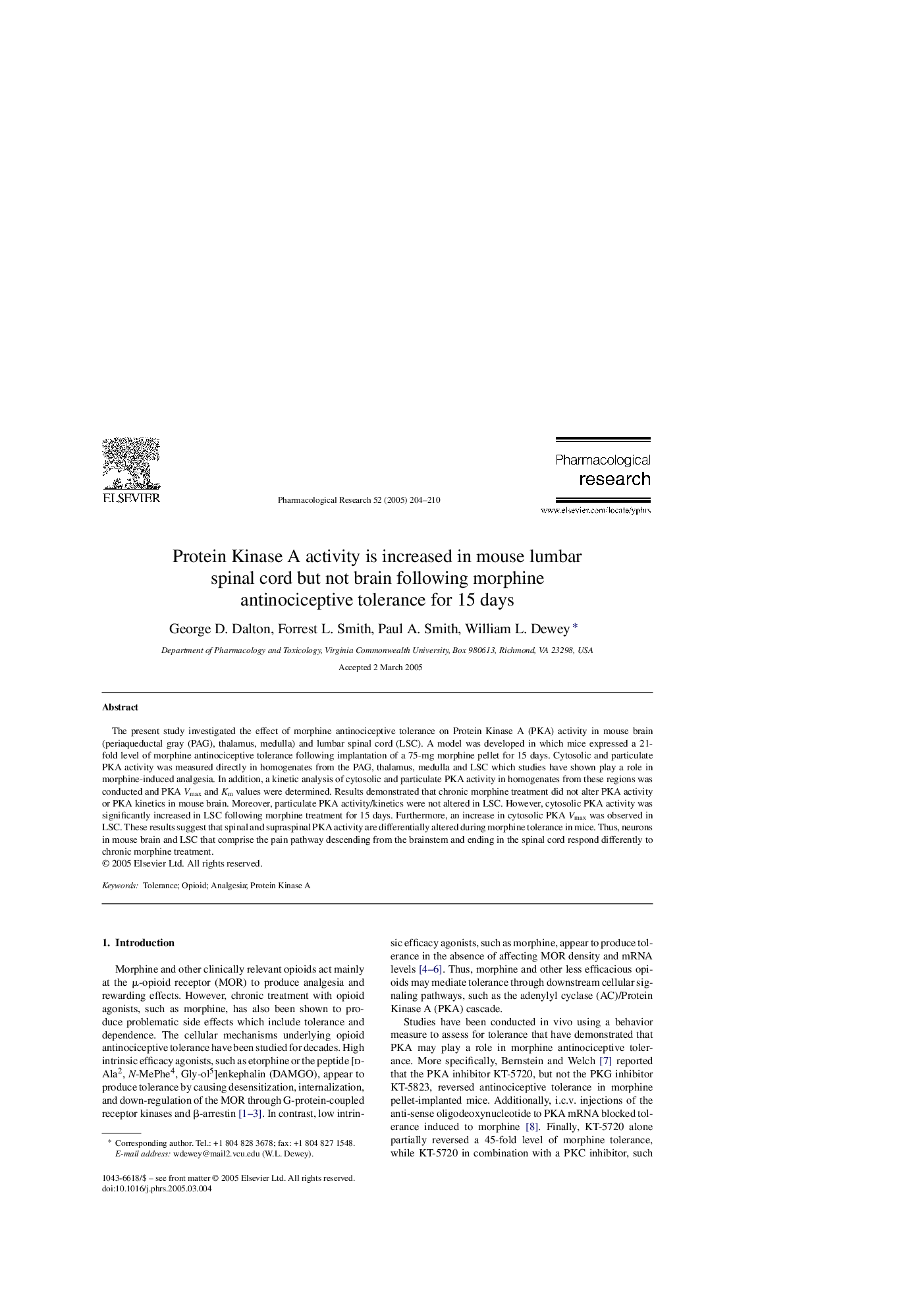| Article ID | Journal | Published Year | Pages | File Type |
|---|---|---|---|---|
| 9015695 | Pharmacological Research | 2005 | 7 Pages |
Abstract
The present study investigated the effect of morphine antinociceptive tolerance on Protein Kinase A (PKA) activity in mouse brain (periaqueductal gray (PAG), thalamus, medulla) and lumbar spinal cord (LSC). A model was developed in which mice expressed a 21-fold level of morphine antinociceptive tolerance following implantation of a 75-mg morphine pellet for 15 days. Cytosolic and particulate PKA activity was measured directly in homogenates from the PAG, thalamus, medulla and LSC which studies have shown play a role in morphine-induced analgesia. In addition, a kinetic analysis of cytosolic and particulate PKA activity in homogenates from these regions was conducted and PKA Vmax and Km values were determined. Results demonstrated that chronic morphine treatment did not alter PKA activity or PKA kinetics in mouse brain. Moreover, particulate PKA activity/kinetics were not altered in LSC. However, cytosolic PKA activity was significantly increased in LSC following morphine treatment for 15 days. Furthermore, an increase in cytosolic PKA Vmax was observed in LSC. These results suggest that spinal and supraspinal PKA activity are differentially altered during morphine tolerance in mice. Thus, neurons in mouse brain and LSC that comprise the pain pathway descending from the brainstem and ending in the spinal cord respond differently to chronic morphine treatment.
Related Topics
Health Sciences
Pharmacology, Toxicology and Pharmaceutical Science
Pharmacology
Authors
George D. Dalton, Forrest L. Smith, Paul A. Smith, William L. Dewey,
